«La vida como el agua, nunca olvida su camino» es una exposición que invita a un viaje introspectivo a través del tiempo, donde el collage se convierte en la herramienta para reconstruir la historia de El Terraplén, un lugar emblemático de Panamá. A través de imágenes de archivo cuidadosamente seleccionadas, la muestra resalta las huellas de la memoria colectiva, las tradiciones y la nostalgia de una comunidad que, como el agua, sigue su curso. Las obras fusionan elementos cotidianos, paisajes, vestimentas y momentos históricos, ofreciendo una reflexión sobre la identidad cultural panameña y el impacto de la migración en la formación del país.

El pasado sábado 8 de febrero, la Fundación Casa Santa Ana en Ciudad de Panamá inauguró la más reciente exposición de la artista Giana De Dier, titulada «La vida, como el agua, nunca olvida su camino». Una muestra que, al igual que el agua, fluye, adaptándose a nuevos cauces, pero nunca olvida su origen.
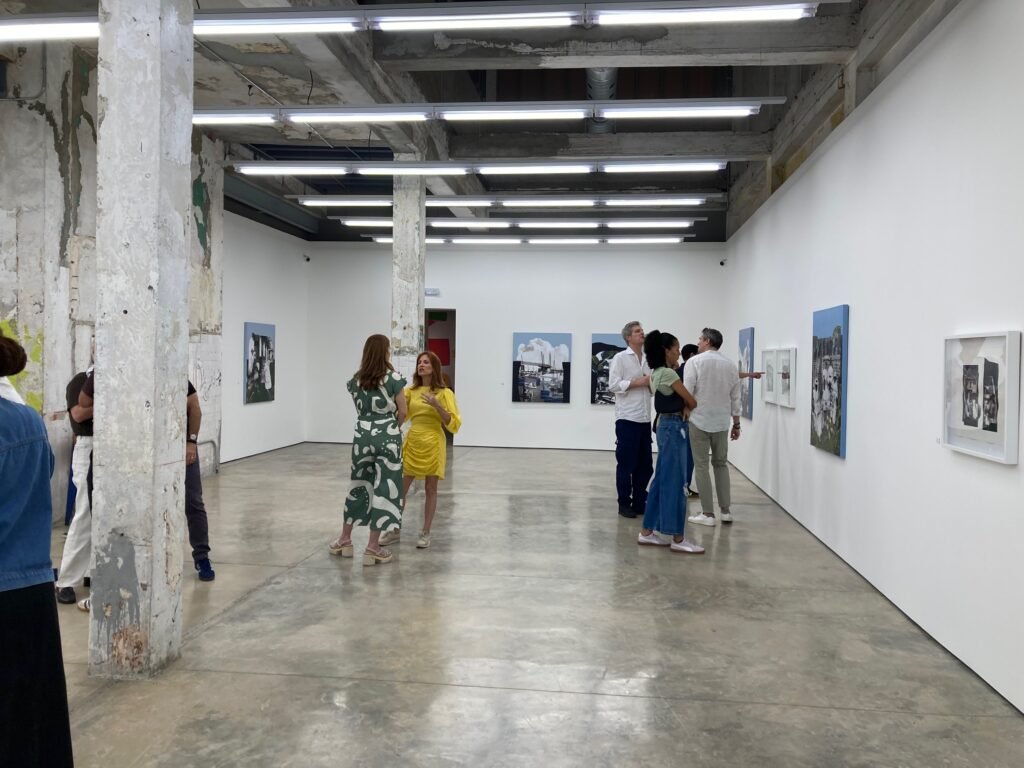
La artista deja claro que no ha olvidado ni la historia ni el pasado de El Terraplén, un lugar clave en la ciudad donde, entre otras cosas, se encuentra la Fundación Casa Santa Ana. Utilizando el collage, De Dier reconstruye ese pasado a partir de imágenes rescatadas de diversos archivos. De este modo, nos transporta tanto a las orillas de un mar que marcó la historia del país como a un mercado popular de finales del siglo XX o principios del XXI. Es un espacio que evoca las dinámicas de la vida cotidiana, la identidad cultural y los flujos migratorios que transformaron la región.
A través del collage, De Dier ensambla fragmentos visuales para generar nuevos discursos y narrativas. Utiliza fotografías en blanco y negro para reconstruir un pasado que, aunque distante, sigue resonando hoy. Como Heráclito afirmaba sobre el río, el agua siempre cambia, y lo mismo ocurre con la memoria y la historia. Sin embargo, lo que fue nunca regresa igual, aunque su esencia permanece.
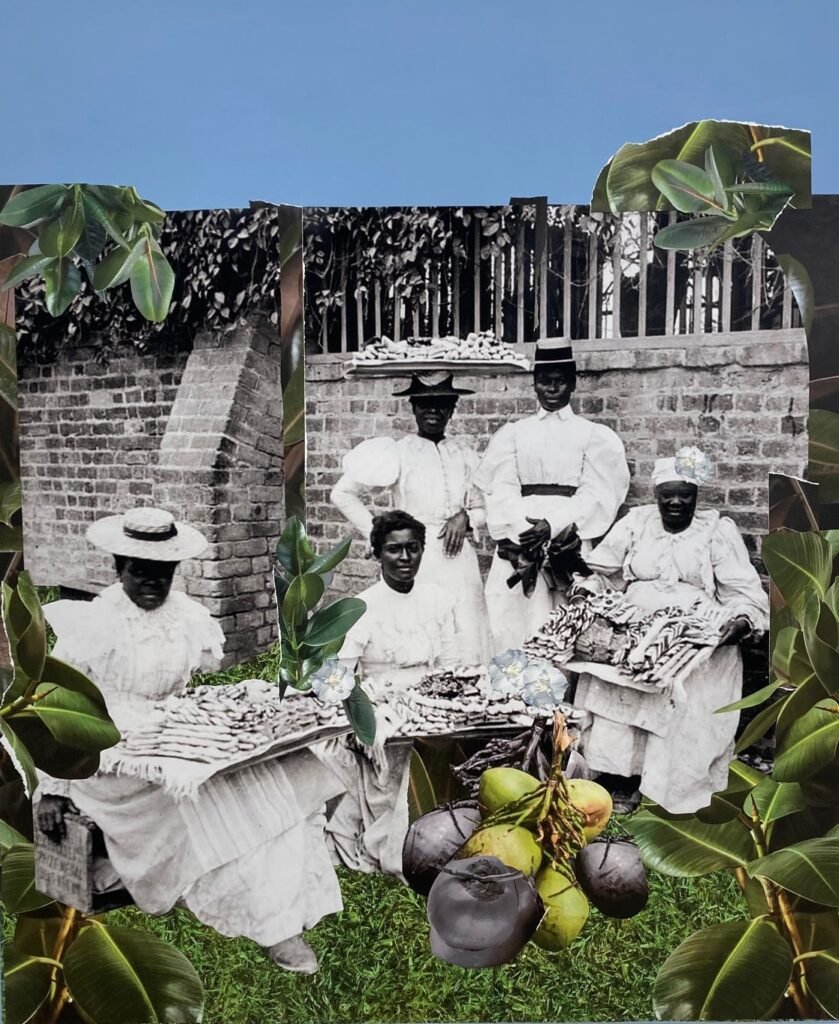
Cada pieza se convierte en un rompecabezas de recuerdos: un ensamblaje de rostros, edificios y paisajes que, al unirse, forman una historia más grande. Donde lo cotidiano se vuelve símbolo: los barcos de pescadores, los mercados bulliciosos, las fachadas antiguas, los vendedores y compradores en sus atuendos de época. Son, al fin y al cabo, postales de un tiempo que persiste en la memoria colectiva.
El agua, la metáfora central de la exposición, remite a la migración y al paso del tiempo, profundamente vinculados a la construcción del Canal de Panamá. Estas obras también rinden homenaje a los miles de migrantes, en su mayoría afrodescendientes, que encontraron en Panamá un nuevo hogar y trajeron consigo sus costumbres, formas de habitar y su legado cultural. Las imágenes reflejan a los descendientes de aquellos trabajadores que cruzaron océanos en busca de oportunidades y transformaron la sociedad panameña. La exposición se convierte, así, en un tributo a su permanencia, adaptación y resistencia.
Aunque el collage de Giana De Dier ha sido históricamente construido con fotografías en blanco y negro, en esta muestra introduce estratégicamente el color en ciertos elementos, como el cielo, las frutas, las hortalizas y la grama. Sin embargo, los personajes permanecen en blanco y negro. Este recurso refuerza la atemporalidad de las figuras humanas, subrayando la continuidad de sus historias. La vestimenta, ya sea cotidiana o formal, permanece sin intervención cromática, como si el pasado no pudiera teñirse, pero sí mantenerse vivo en su forma más pura.
La elección del color en los elementos naturales parece señalar la permanencia de lo esencial, de aquello que no cambia con el paso del tiempo. Las frutas del mercado, el verde del paisaje, la luz del cielo azul, son testigos silentes de la transformación social. La ropa de los personajes, por su parte, actúa como un testimonio intacto de la época representada, como un eco del ayer que resiste al presente.
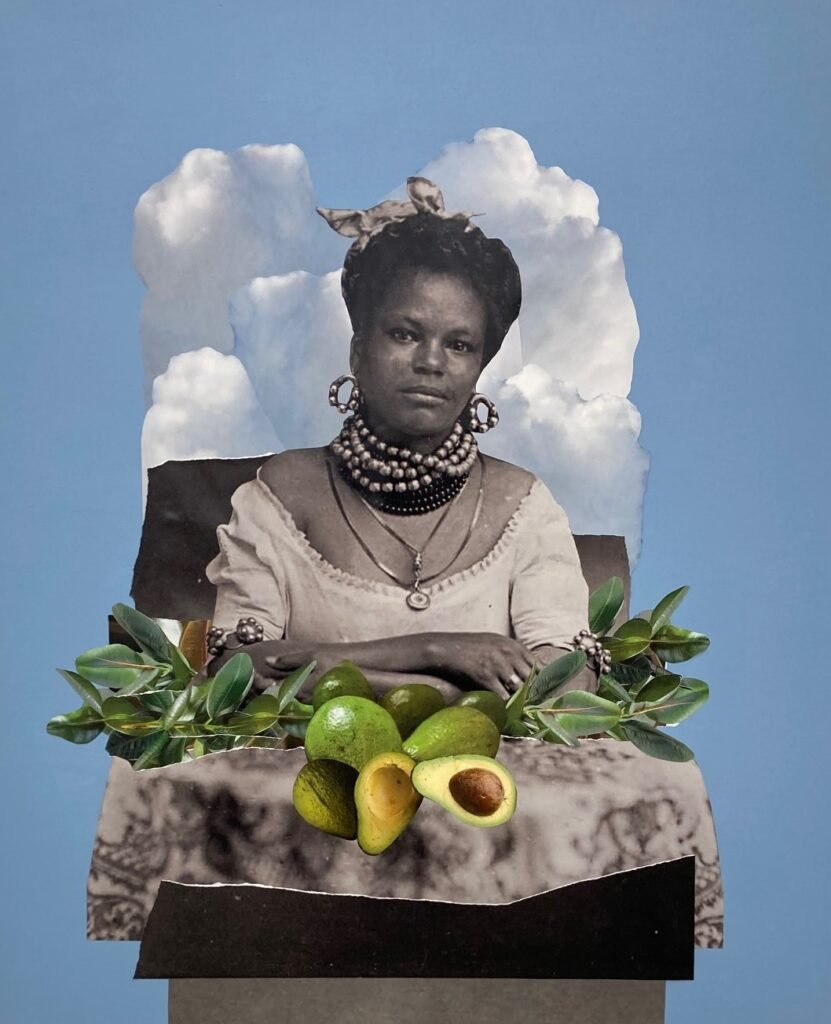
La exposición nos invita a un ejercicio de nostalgia, pero no como simple melancolía, sino como un acto de reconstrucción. La memoria, en definitiva, no es estática; se revisita, se reinterpreta y se reinventa. A través del collage, De Dier nos ofrece la oportunidad de observar un pasado que sigue vivo en los trazos de la identidad panameña.
El agua nunca olvida su camino, y lo mismo ocurre con la historia de aquellos que hicieron de El Terraplén un espacio de vida, comercio y cultura. Esta muestra es un recordatorio de que las huellas del pasado siguen presentes en el presente y que, como las aguas de un río, la memoria siempre encuentra su cauce, fluyendo eternamente hacia su origen, como un eco inquebrantable del tiempo.
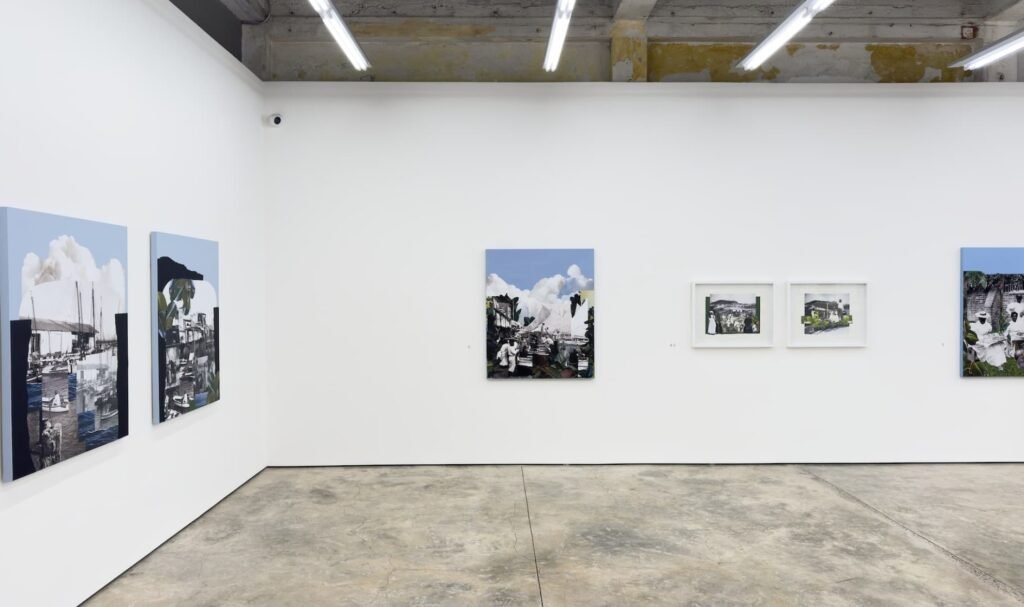
Life Like Water, Never Forgets Its Path
«Life like water, never forgets its path» is an exhibition that invites an introspective journey through time, where collage becomes the tool to reconstruct the history of El Terraplén, an iconic place in Panama. Through carefully selected archival images, the exhibition highlights traces of collective memory, traditions, and nostalgia from a community that, like water, follows its course. The works blend everyday elements, landscapes, clothing, and historical moments, offering a reflection on Panamanian cultural identity and the impact of migration on the country’s formation.
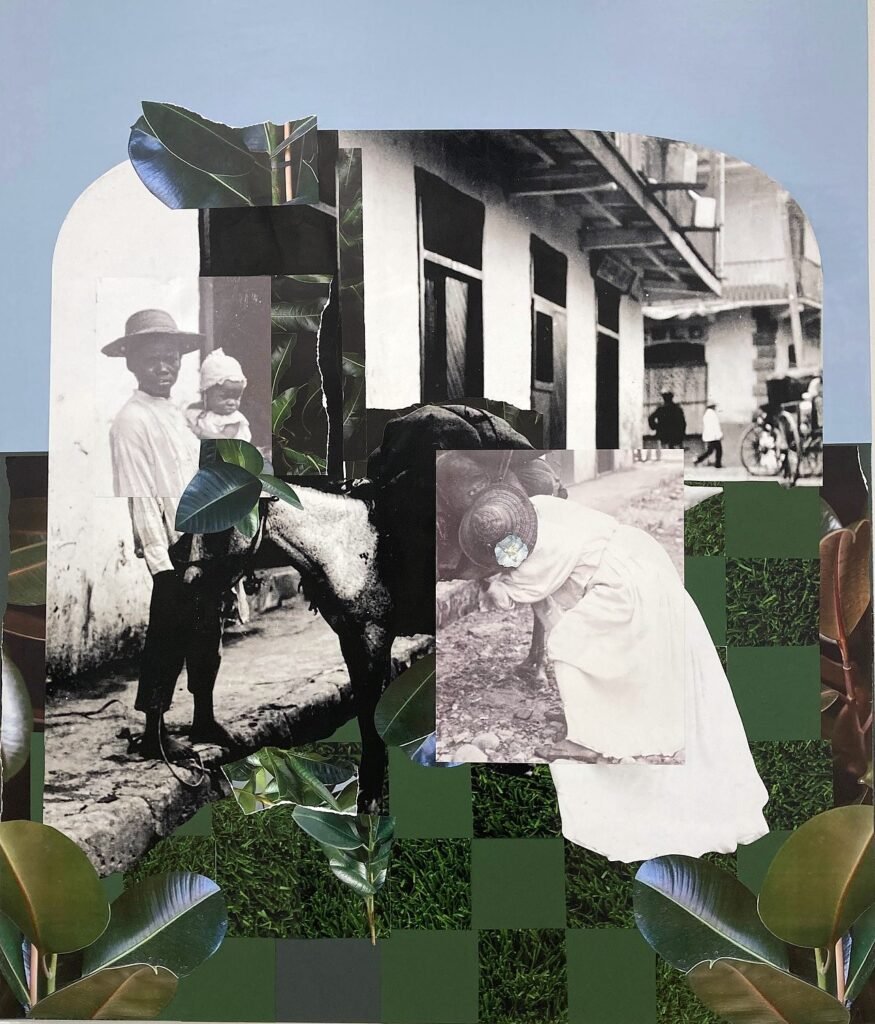
On Saturday, February 8th, the Fundación Casa Santa Ana in Panama City opened the latest exhibition by artist Giana De Dier, titled «Life, like water, never forgets its path.» An exhibition that, like water, flows, adapting to new channels, yet never forgets its origin.

The artist makes it clear that she has not forgotten the history or the past of El Terraplén, a key place in the city, where, among other things, Fundación Casa Santa Ana is located. Using collage, De Dier reconstructs that past from images rescued from various archives. In doing so, she transports us both to the shores of a sea that marked the country’s history and destiny, and to a popular market from the late 20th or early 21st century, evoking the dynamics of daily life, cultural identity, and migration that transformed the region.
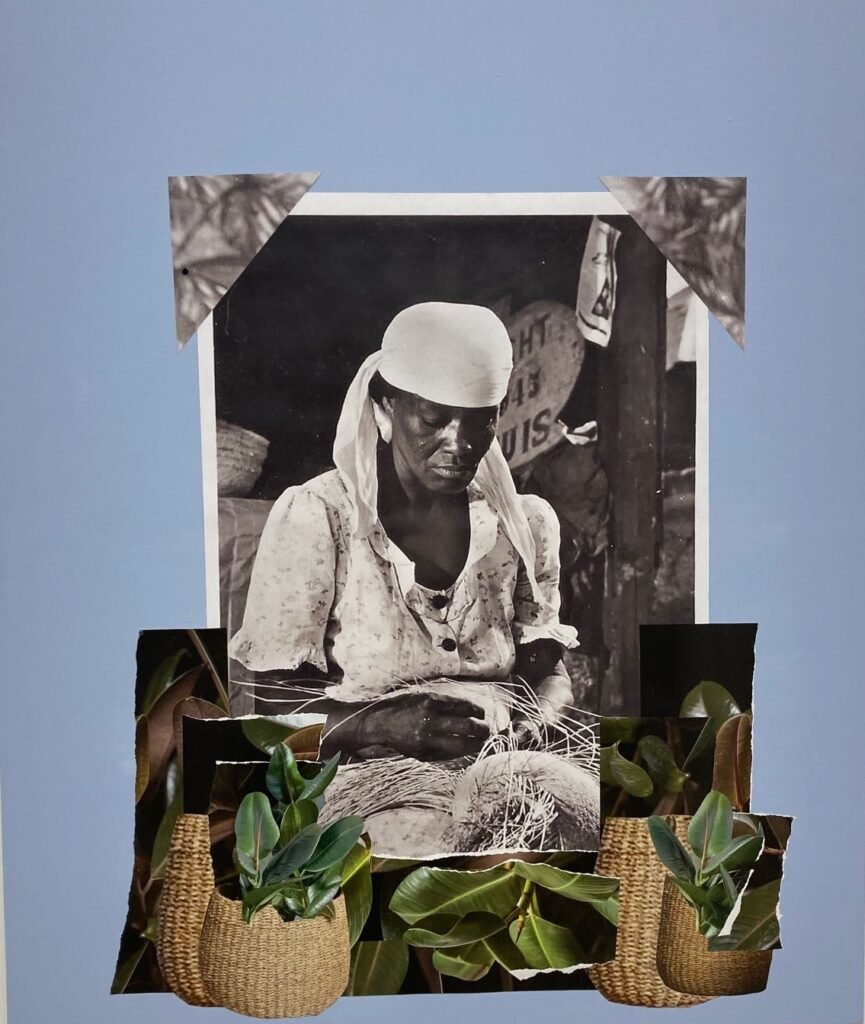
Through collage, De Dier assembles visual fragments to generate new discourses and narratives. She uses black-and-white photographs to reconstruct a past that, though distant, still resonates today. As Heraclitus claimed about the river, water is always changing, and so is memory and history. However, what was never returns the same, though its essence endures.
Each piece becomes a puzzle of memories: a collage of faces, buildings, and landscapes that, when combined, form a larger story. The everyday becomes a symbol: fishing boats, bustling markets, old facades, and vendors and buyers in period clothing. They are, ultimately, like postcards from a time that persists in the collective memory.
Water, the central metaphor of the exhibition, refers to migration and the passage of time, deeply tied to the construction of the Panama Canal. This work also pays tribute to the thousands of migrants, mostly Afro-descendants, who found a new home in Panama and brought with them their customs, ways of inhabiting space, and cultural legacy. The images reflect the descendants of those workers who crossed oceans in search of opportunities and transformed Panamanian society. In this sense, the exhibition becomes a tribute to their permanence, adaptation, and resilience.
While Giana De Dier’s collages have traditionally used black-and-white photographs, in this exhibition, she strategically introduces color into certain elements, such as the sky, fruits, vegetables, and grass. However, the characters remain in black and white. This technique reinforces the timelessness of the human figures and underscores the continuity of their stories. Clothing, whether everyday or formal, remains without chromatic intervention, as if the past cannot be tinted but can remain alive in its purest form.
The choice of color in the natural elements seems to highlight the permanence of the essential, that which does not change over time. The fruits in the market, the greenery of the landscape, and the light of the sky are silent witnesses to social transformation. The clothing of the characters, on the other hand, serves as an untouched testimony of the represented era, like an echo from the past that resists the present.
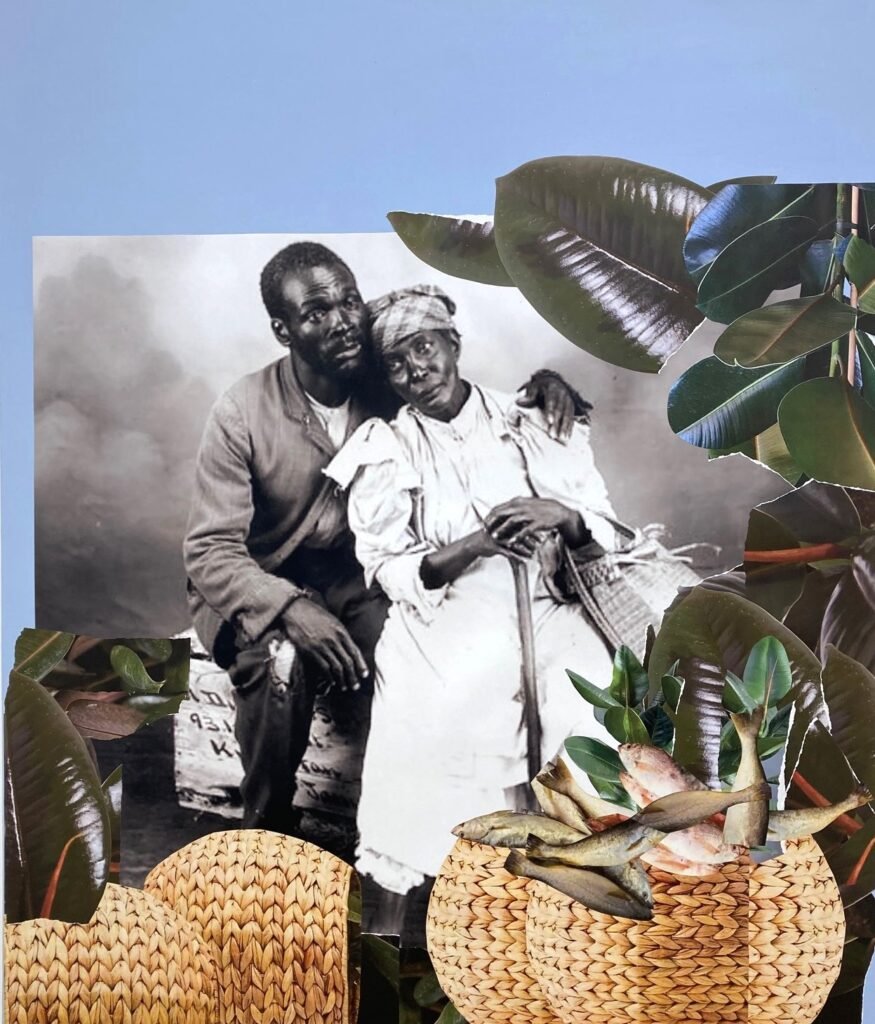
The exhibition invites us to engage in a nostalgic exercise, but not as mere melancholy. It is an act of reconstruction. Memory is not static; it is revisited, reinterpreted, and reinvented. Through collage, De Dier offers us an opportunity to observe a past that remains alive in the brushstrokes of Panamanian identity.
Water never forgets its path, and the same is true of the history of those who made El Terraplén a space for life, commerce, and culture. This exhibition reminds us that traces of the past are still present in the present, and like the waters of a river, memory always finds its course, eternally flowing back to its origin, like an unbreakable echo of time.
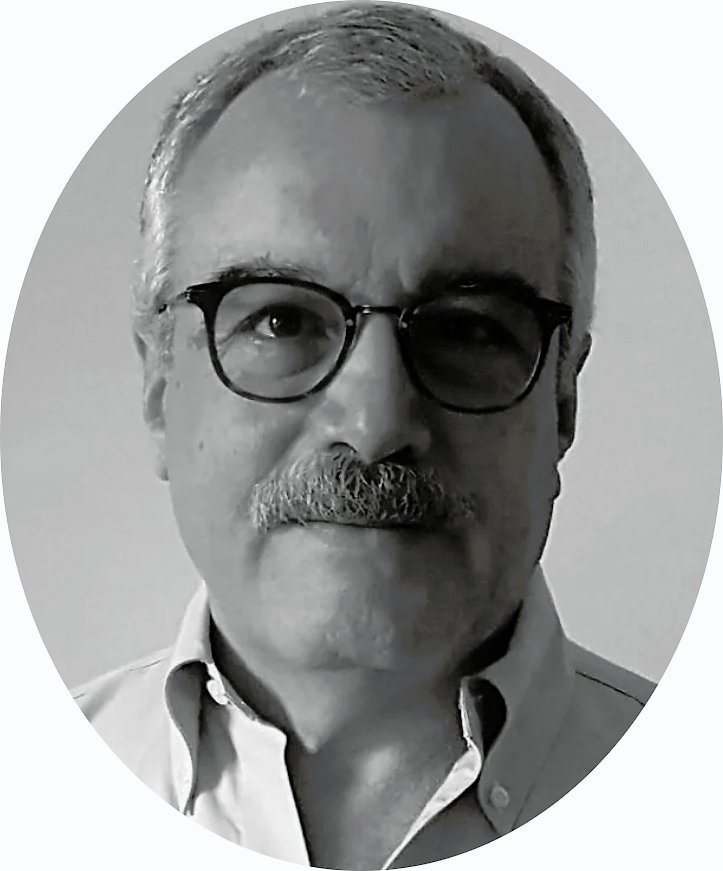
Cesar Sasson
Ciudad de Panamá, Panamá
Febrero, 2025







